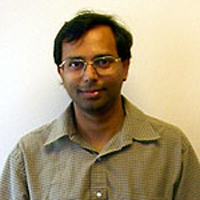
professor of computer science at
Florida State.
Florida State University is leading a multiuniversity effort to analyze new strategies for reducing the risk of Ebola spreading through air travel.
Associate Professor of Computer Science Ashok Srinivasan will lead a team that includes researchers from Embry Riddle Aeronautical University and Arizona State University to examine ways that airlines could limit exposure of passengers to fellow passengers who are infected with Ebola.
Researchers will use computer simulations to analyze how humans get on and off planes and how they move around during the flight to see how that affects the likelihood of the disease spreading.
“Predicting exact human response to policy decisions is difficult. Rather, we aim to identify vulnerabilities in different policy options given inherent uncertainties,” Srinivasan said. “And we need to determine if some of these vulnerabilities would lead to disastrous consequences, such as causing an epidemic in the U.S.”
A severe outbreak of the disease began in Guinea in December 2013 and quickly spread to Liberia and the Sierra Leone resulting in more than 10,000 deaths. Health and aid organizations quickly began raising money to speed along research for everything from treatment to prevention efforts.
The National Science Foundation, through its Rapid Response Research Grant mechanism, is among the organizations funding research on Ebola. The foundation gave Srinivasan’s team a $200,000 to jumpstart its proposal.
“We want to have an infrastructure where you can deal with these problems and new ones that arise, quickly,” Srinivasan said. “We targeted air travel because it is an important means for the spread of diseases.”
The team hopes to quickly produce results comparing different policies for both seat assignment and the disembarking process, he said. They will later refine their models for a larger and more comprehensive study.
The team brings together various areas of expertise to tackle the problem. FSU alumnus Sirish Namilae, now at Embry-Riddle Aeronautical University, has one of the best models for evacuation of passengers from planes. And Arizona State University researchers Matthew Scotch and Robert Pahle study how disease travels over vast areas and real-time processing of complex models respectively.
Srinivasan, who will serve as coordinator for the entire project, will then use a supercomputer to test the models. Srinivasan previously used super computers to analyze public policy as part of his work on a Fulbright grant.
The software and modeling infrastructure that the team develops could be used with other contagious disease scenarios as well. Having solutions to air travel vulnerabilities are crucial, he said.
“Disease spreads very quickly,” he added. “This is something that is urgently needed.”




